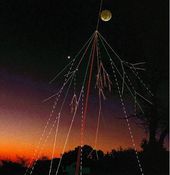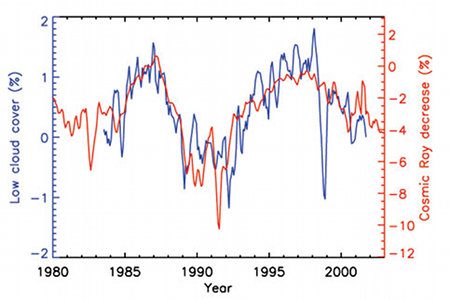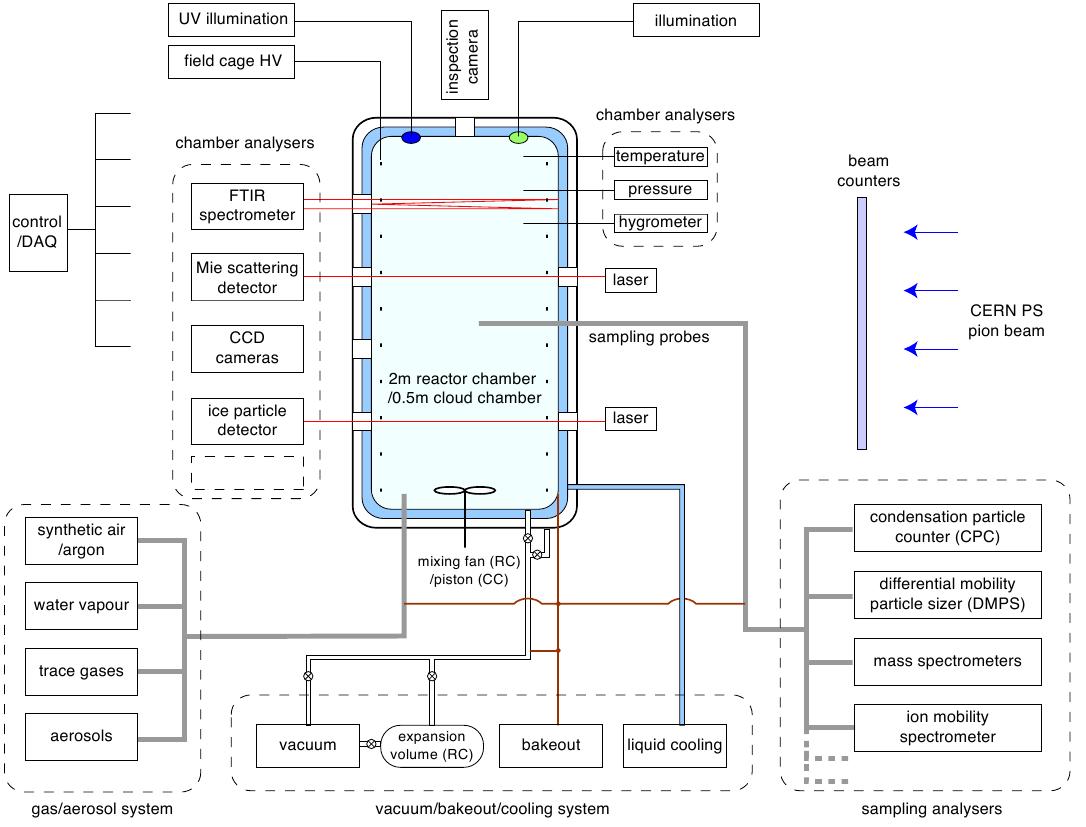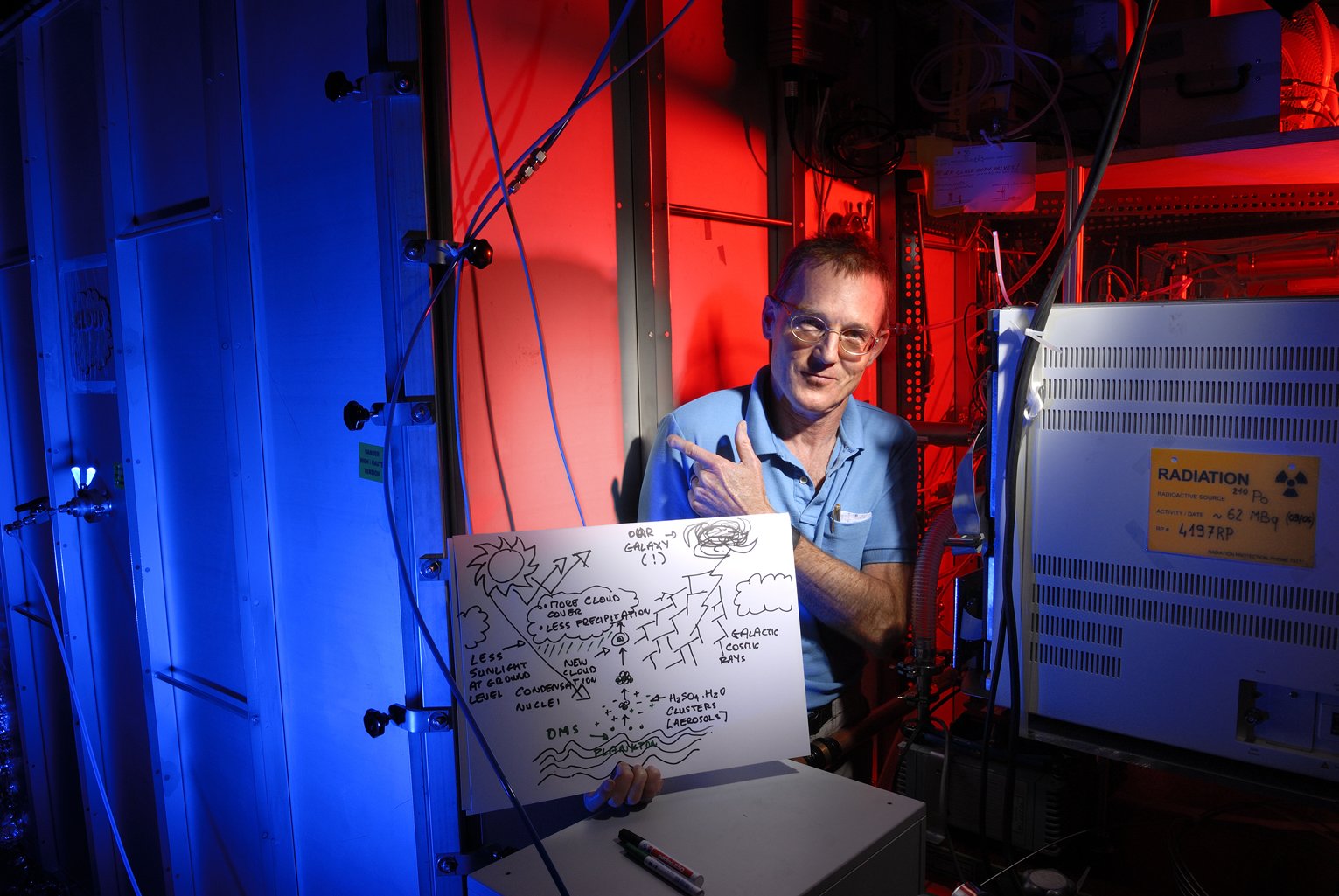
© unknown
Two computer modelers from CMU have written a program to simulate the interaction of cosmic rays with Earth's atmosphere. Because the model failed to predict significant increases in cloud cover, global warming activists are claiming the theory linking cosmic rays to climate change has been discredited.
Climate models have failed to accurately predict the current downward trend in temperatures and now we are asked to accept a model as proof of how the Universe works. In truth, the paper cited is nothing more than a study of a computer program, and has nothing to do with the physical reality of how Earth's climate functions.
Appearing in
Science under the title, "Study Challenges Cosmic Ray - Climate Link," a
review of the paper by Jeffrey Pierce and Peter Adams of Carnegie Mellon University in Pittsburgh, Pennsylvania, was used as an excuse to cast doubt on the theory that cosmic ray levels affect the creation of clouds in Earth's atmosphere. This theory was first proposed in 1997 by physicists Henrik Svensmark and Eigil Friis-Christensen of the Technical University of Denmark in Copenhagen. They reported that Earth's cloud cover seemed to vary in step with galactic cosmic rays - high-energy charged particles from outer space - striking Earth's atmosphere. The more cosmic rays, the more cloud cover, the more cloud cover the fewer warming rays from the sun reaching Earth's surface to affect the climate.

© unknown
One of the reasons that the cosmic ray theory is so intriguing is that, to a significant extent, the sun's activity regulates the volume of particles impacting Earth, thus providing a mechanism for variation in the sun to affect earthly climate in ways other than irradiance (direct solar radiation). If Svensmark and Friis-Christensen's theory is correct, changes in solar activity are responsible for a large portion of climate variation, greatly diminishing the importance of greenhouse gases like CO2. This assault on climate change orthodoxy, combined with the fact that Svensmark and Friis-Christensen are not members of the climate change fraternity, have singled them out for attack by global warming true believers.
A study disproving the cosmic ray theory is perfectly plausible and an acceptable part of the way science works. When I first saw the title of the report in Science I was immediately excited. What cunningly conceived experiment had been devised to prove or, even harder, disprove the impact of cosmic rays on cloud formation? What finely reasoned logic allowed the researchers to separate the effects of cosmic rays from other influences and make this claim? After all, Svensmark and Nigel Marsh had shown the statistical correlation between galactic cosmic rays (GCR) and cloud cover in a
study of satellite data published in the
Journal of Geophysical Research - Atmospheres, in 2001. In it they stated, "
The results presented here lend further support to the idea that at interannual timescales, solar variability has influenced low cloud [cover]."

© unknown
Knowing that simply showing a statistical connection would be insufficent proof - there are many interesting correlations in nature that are not causally related - in a basement at the Danish National Space Center an experiment was set up to verify that cosmic rays could cause low level clouds to form under controlled conditions. The
SKY Experiment used a cloud chamber to mimic conditions in the atmosphere. This included varying levels of background ionization and aerosol levels, and sulphuric acid (H2SO4), in particular. The SKY Experiment demonstrated that more ionization implies more particle nucleation. For a detailed writeup of the cosmic ray-climate connection please see
The Resilient Earth,
Chapter 11.
More evidence was published in a 2006
paper by Luis Eduardo Antunes Vieira and Ligia Alves da Silva of the Instituto Nacional de Pesquisas Espaciais, Brazil, entitled
Geomagnetic modulation of clouds effects in the Southern Hemisphere Magnetic Anomaly through lower atmosphere cosmic ray effects. Studying cloud formation in the Southern Hemisphere they found: "
The geomagnetic modulation of cloud effects in the net radiative flux in the atmosphere in the SHMA is, therefore, unambiguously due to GCRs and/or highly energetic solar proton particles effects."
With preliminary experimental verification having been conducted in the SKY Experiment, CERN, the European Organization for Nuclear Research in Geneva, has decided to conduct more comprehensive verification in the
CLOUD Project. This project has the backing of many institutions, from the California Institute of Technology to the Russian Academy of Sciences. A diagram of the proposed
experimental apparatus is shown below.

© unknown
The experiment comprises a 4 m diameter aerosol chamber and a 0.5 m diameter cylindrical cloud chamber which are exposed to an adjustable particle beam which simulates GCRs at any altitude or latitude. The chambers are filled with air, water vapor, trace gases and aerosols and can be operated at any temperature or pressure found in the terrestrial atmosphere. Each chamber contains an electric field cage to control the drift of small ions and charged aerosols while UV illumination allows photolytic reaction.
"The experiment has attracted the leading aerosol, cloud and solar-terrestrial physicists from Europe; Austria, Denmark, Finland, Germany, Switzerland and the United Kingdom are especially strong in this area" says the CLOUD spokesperson, Jasper Kirkby of CERN. Kirkby is shown below with a sketch to illustrate the possible link between galactic cosmic rays and cloud formation. An interdisciplinary team from 18 institutes and 9 countries in Europe, the United States and Russia will perform the experiment.
We will know if Svensmark is really on the right track when the CLOUD project starts producing data in 2011.

© unknown
So you see, those who are doing
real research on the subject of cosmic rays and climate are actually studying
physical phenomena by constructing
real experiments in order to take
actual measurements - exactly what you would expect reputable scientists to do. Remember, they are attempting to establish the existence of new causal links, new phenomena that have not been considered previously by climate scientists. And here come Pierce and Adams' computer model, "a global atmospheric computer model of the sort used to model climate," in a preemptive strike on real science using the same discredited techniques as the IPCC global warming cabal.
As Pierce and Adams report in their paper, in press in
Geophysical Research Letters, their model showed that changes in cosmic rays are two orders of magnitude too feeble to cause the changes in clouds. "I'm feeling fairly confident that other models will also show the change in CCN is very weak," Pierce remarked. "It's possible the models are missing something important; it just doesn't seem likely."
Not to be left out, other climate change backers have have begun running similar global simulations of atmospheric particle formation, provoking a range of reactions. "We see a very similar thing"in our model, says Jan Kazil of the University of Colorado, Boulder. "Cosmic-ray variations have only a small effect on the clouds in our model."
Well, of course, the models are based on existing theory and fed with parameters selected by the modelers - what could go wrong with that?What assumptions were made? What simplifications? What baseline data did they use to validate their model? The data yet to be collected by CLOUD? A model cannot be trusted to produce even remotely useful results without validation and even then they are often worse than useless. As an experienced computer modeler I can tell you that models can be hyper sensitive to the smallest of changes to seemingly innocuous parameters. I am not alone in casting doubt on the veracity of the modeler's claims, Fangqun Yu of the University at Albany in New York says he disagrees with the Carnegie Mellon researchers "
because of problems in their simulations." That's putting it mildly.
This is not real science, it is a parlor trick, a conjuring act using computer software to summon up mealiness data that are then spun into "facts" used to dismiss out of hand an inconvenient competing theory. A more truthful title to the report would have been "Computer Model Fails To Establish Cosmic Ray - Climate Link." This model proves nothing about the real world.
It is one thing to construct a model as a way to gain insight to a larger investigation, I do not fault Pierce and Adams for that.
I do hold them and the journals who have reported their results as scientifically significant in contempt as climate change spin doctors, on the same level as Gore and Hansen. As Wolfgang Pauli famously said of a paper submitted by a colleague, "
This isn't right. This isn't even wrong." To that I will add this is not science and it sure as hell isn't proof.
Be safe, enjoy the interglacial and stay skeptical.
Reader Comments
to our Newsletter